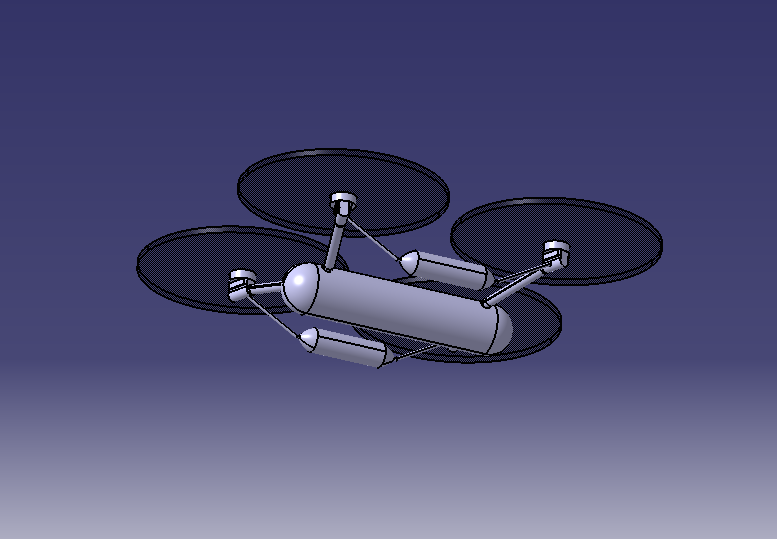From the Workshop 2: Fault Detection & Redundancy
A blog by Marwan Hussein, Balint Magyar, Michele Bianconi, and Sanjesh Hoskopple.
Welcome back to the second edition of our “From the Workshop” series, where our goal is to immerse you further into the day-to-day activities of our team and give you a glimpse of what goes on behind the scenes! As a deep tech company that has been pouring effort into proving and introducing never-before seen technology into the drone industry, we do not only find ourselves trying to change the norm of what a flight controller should be able to do, but also how our customers should start perceiving flight controllers within the greater context of the upcoming regulations as well.
With that said, carry on reading to see what new things we have been working on, what you should expect over the coming months, and how you can get involved in our future vision!
GCS Updates
Picking up where we left off in our first FtW edition, a subsection of our software team has been able to make leaps in the development of our ground control software and what it can bring to drone operators sporting the Reflex in their platforms.
With the first version of the software having been made more robust and less susceptible to errors, our team has been focusing on making it easier to navigate, more versatile, and more functional for the person behind the screen.
This means that the user will now be able to save and load missions from their own device, as well as download mission plans from the drone itself. Missions can now also be planned on a map and uploaded to the Reflex for your drone to execute.
Coupled with our knowledge that the Reflex can provide you with as rigid of a flight path as possible, we concentrated on the above mainly to enable operators to spend less time worrying about where their drone might end up straying to, and focus on planning the path their drone should be flying on.


Needless to say, its development will not stop there; with the centre of attention now turning towards user friendliness even more, we are emphasizing getting the seemingly small details right, which we know will make all the difference. Here are some of the things you should expect to see in its next iterations:
- Users will be able to define a task for each endpoint that needs to be completed before moving on. This can be just a wait timer, but it can get more complex depending on the user’s setup, like taking photos/videos, or sensor readings.
- Users will also be able to see the progress of the mission the drone is currently executing and will be notified once it’s done or if anything goes wrong.
- More flight modes and commands will soon be controllable via the GCS.
- Additional important settings for the drone will be made available through the User Interface.
- After mission planning is fully supported, the map view will be improved further; there will be more options for map providers – for example satellite view – and users will also be able to fetch and view local exclusion zones.
- Plug and play support for RTK positioning systems – and possibly Optitrack -, point-and-click flying, local coordinate system support for indoor flights, support for cameras, as well as the ability to fully calibrate the drone through the GCS.
Our ground control software is meant to be complementary to the Reflex, giving you an even more enhanced and comprehensive experience to what you would already be getting from the Reflex by itself. We’ll make sure to notify you when it’s good to go!

Test flights & workshop
With the aim of being able to integrate into existing drone platforms seamlessly, we set off on this goal by adopting one of Freefly’s retired drone platforms as our reliable workhorse for experimentation. Our drone of choice for this purpose was the Alta 6, a hexacopter equipped with an old flight controller which we are working on replacing with the Reflex. Alongside this, we will be retrofitting it with up two GPS antennas to examine the positioning of one of them relative to the other, which will in turn help us improve the heading data we can relay to our flight controller.

At Fusion, we stress the importance of having a selection of testing methods to make sure the Reflex works with almost everything currently circulating the market. With that said, one of the mini side-projects we have been working on involves the design of a simple test stand that would allow us to swap out and examine the performance of different motors in various configurations – without too much hassle.


Tripling down on redundancy, our technical team has also been working on putting the various safety nets we’ve been developing to the test by taking flight failure to the edge. Our engineers were able to design a special release mechanism that would allow a propeller to detach from the motors mid-flight. By intentionally doing this, we are able to test the behaviour of our onboard fault detection system and examine its ability to mitigate some of the most extreme failure cases during flight, successfully demonstrating the Reflex’s ability to reconfigure itself for all flights, even with a missing propeller – Yikes.
You can rest assured that not only will your drone fly in a straight line – even in bad weather -, but that you’ll also be sparing yourself having to deal with -understandably- unhappy customers and rebuild the entire thing if a propeller or two decide to check out!


SARDIN
True to our goal of providing the highest levels of safety, we have been working closely with our Spanish partners, DroneTools, on building an amphibious rescue drone that is capable of landing on water and scanning for submerged victims using a SONAR payload.
With the first stages of development completed, our teams have now turned their sights towards making sure that the peripheral hardware can communicate information to the flight controller correctly.
Although easier said than done, a fair share of effort was put into making sure that the hardware responds reliably to external stimuli every time, particularly in a rescue drone – a vehicle you don’t want to be wasting time on recovering during an ongoing rescue operation.
Early Access
You’ve seen us talk about it quite a bit, but what is it really?
Over the past 5 years, we’ve been working on bringing an idea from the drawing board into reality. Countless iterations, test flights, crashes, and re-builds later, this year we are finally confident we can bring drone manufacturers the solution we’ve been promising for the past half decade. Although we are not aiming to fully release our product until mid-2024, we are taking a few steps in the interim to help our target audience get accustomed to something that is unfamiliar to the industry.
This is where the Early Access program comes into play; we have tailored a package specifically for drone manufacturers that are looking to adopt this technology at an early stage, help us cross the t’s and dot the I’s, and in return be able to rapidly scale their manufacturing with the Reflex on their drones once the program is wrapped up.
Over the duration of approximately 6 months, our participants will be outfitting, flying, and testing their drones with four of our units with the aid of a set of test plans that we provide them with. This will allow our team to gather valuable unbiased information from companies that believe in our technology and are willing to be at the forefront of the uncrewed revolution.
By following a hands-off approach, we allow our participants to fly at their convenience and provide us with as much information as possible, assist us in securing the final mile of our technology and really understand what they need. For this, we will be walking alongside them throughout every step of the way, with structured regular meetings, specialized online environments, rapid software updates and support requests, and procedures tailored specifically to each player’s intended goal.
Having tried our hand at developing a commercial drone ourselves during the embryonic stages of Fusion, we recognize the effort and difficulty involved in this iterative process. For that reason, we have put together a handful of benefits that would propel our participants’ business to the next level. Take a look at what you could be receiving for your participation in the program for the next 3 years.
- Priority for additional support – so you’ll be spending less time in the hangar.
- First to know about new products – so you’ll have a head start on your competition.
- Bigger discounts than regular customers for larger batch orders – so you’ll be able to scale faster.
- Discounts on additional support – because we always value a good conversation with our customers.
- Discounts on newly released products – to give you that extra boost on top of being the first to know.
If you’ve read this far, it means you are already well aware of the endless possibilities drones can have on facilitating some of the most difficult tasks currently being performed manually, and more. Does your team thrive on innovation and taking unconventional approaches to tackle equally demanding challenges? Do you see your company as being the trailblazer at the forefront of the uncrewed revolution? Make sure to sign up and not miss out on this opportunity by sending me an email below!
Make sure to stay up to date with what we roll out from the workshop by following us on LinkedIn and subscribing to our Newsletter!




